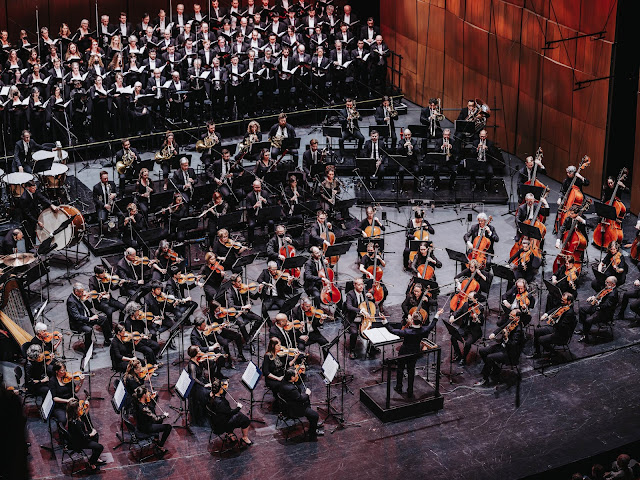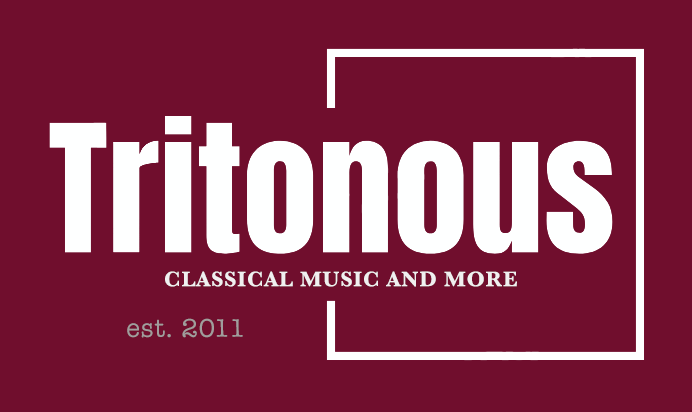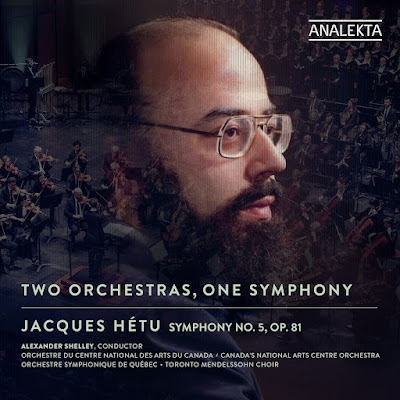Jacques Hétu: Symphony No. 5; Canada’s National Arts Centre Orchestra, Orchestre Symphonique de Québec, Toronto Mendelssohn Choir, Alexander Shelley; Analekta
Reviewed 29 January 2025
Premiered three weeks after his death, Canadian composer Jacques Hétu’s massive symphony is a remarkable reflection of the acuteness and refinement of his ear, and his striking reinvention of the symphony as a 21st century form, looking forward and back
The Canadian composer Jacques Hétu became one of the country’s most esteemed and frequently performed composers, with a catalogue of some 70 works, including symphonies, opera, choral and chamber music, and concertos. His Symphony No. 5 was commissioned by the Toronto Symphony Orchestra and premiered at the 2010 New Creation Festival. Sadly, Hétu died just three weeks before the premiere. Though there is a selection of Hétu’s work in the catalogue, there seems little in the way of his symphonies. So there are plenty of reasons to welcome the innovative new release of his final symphony.
On this new disc from Analekta, Canada’s National Arts Centre (NAC) Orchestra and the Orchestre Symphonique de Québec (OSQ) join forces with the Toronto Mendelssohn Choir under the baton of Alexander Shelley (musical director of the NAC Orchestra) to perform Hétu’s Symphony No. 5. Under the title The Two Orchestras, One Symphony project represents a partnership between the NAC Orchestra and the OSQ, who joined forces for the first time to bring Hétu’s masterwork to life with over 100 instrumentalists and 114 singers.
Hétu’s musical studies took him from Canada, to Tanglewood (where he worked with Lukas Foss) and finally Paris where he worked with Henri Dutilleux and Olivier Messiaen. Dutilleux encouraged Hétu to pursue his own style in composition and not be influenced strongly by current trends and rather than exploring serialism or atonality, Hétu moved towards tonality and his Symphony No. 3 from 1971 represents his definitive return to having a tonal core to his compositional technique. Evidently, this did not always go down well with his more avant-garde fellow musicians but he commented, “I handled the ostracism thanks to performers who played my music or commissioned works from me”.
 |
| Jacques Hétu: Symphony No. 5 – Canada’s National Arts Centre Orchestra, Orchestre Symphonique de Québec, Toronto Mendelssohn Choir, Alexander Shelley – Southam Hall, Ottawa (Photo: Curtis Perry) |
Not only is Symphony No. 5 essentially tonal, but it is programmatic and ends with a choral hymn to liberty in a very modern take on Beethoven. The first movement, Prologue represents Paris before World War II, then comes The Invasion, representing the war, The Occupation, referring to the German occupation of Paris and finally Liberty which sets Paul Éluard’s great poem Liberté (also set by Poulenc in Figure Humaine).
Despite the huge forces involved, the result is surprisingly thoughtful, yet intriguingly complex in its textures. Hétu approach to tonality is never simplistic, and having a tonal centre to the work does not necessarily involve simplification and the complexities of timbre and texture here do make you realise that he studied with Dutilleux and Messiaen. The style seems somewhat familiar and full of referential information, yet also distinctly Hétu’s own. Symphonically we can’t really relate this music to post-war French music and I have to admit a woeful unfamiliarity with the Canadian musical background from which Hétu sprang. But in this symphony, Hétu seems to be mining symphonic structures from composers such as Sibelius and Shostakovich, though the sound worlds are apart.
Each movement takes its time, the total running time is something over 45 minutes with the final movement occupying 20 minutes of this. The opening movement, Prologue begins a slow awakening, with Hétu relishing the mixtures of timbres and overlaying textures, at times with suggestions of bitonality and giving us a feel for the complexity of city life whilst shying away from anything concretely descriptive. Invasion is inevitably fast and vivid, with plenty of threatening moments, yet even here we appreciate the richness of Hétu’s vision, he does not use his large forces to batter us. Shelley keeps the music moving forward with a sense of constant propulsion, giving the piece an inexorable feel. The final moments, when they come, are angry but perhaps not devastating. Life must go on and this is what happens in The Occupation, a slow and dark movement that begins in a satisfyingly brooding manner. This movement sees Hétu at his most bleakly Sibelian, and the results are sombre yet profoundly satisfying. The harmonic world here is complex, at one point Hétu builds up a chord from the overtone series of the note C. This is music that really twists your gut. The final movement, Liberty is something of a surprise. Subtle and thoughtful, each stanza receives a somewhat different treatment and only at the end with the cries of ‘liberté’ do we feel the innate power of the assembled forces as a radiant cry leads to final moments that are positively victorious. There is a refinement and subtly to Hétu’s writing which is emphasised when the choir comes in. Though this is a choral movement, we are aware of the way Hétu surrounds the chorus with a web of sounds.
The recording was made after a series of concerts by the same forces, and you feel that all concerned have Hétu’s refined sound world in their bones. There are extensive booklet notes (in French and English), including a short memoir by Hétu’s widow. What no-one explains is why a French-Canadian composer felt so bound to this subject, creating such a masterly evocation of wartime France with its culmination in the symphonic exploration of Paul Éluard’s great poem.
Jacques Hétu (1938-2010) – Symphony No. 5 (2010) [46:00]
Canada’s National Arts Centre (NAC) Orchestra
Orchestre Symphonique de Québec
Toronto Mendelssohn Choir
Alexander Shelley (conductor)
Recorded on 8 & 9 March 2024, in Southam Hall, Canada’s National Arts Centre
ANALEKTA AN 2 8890 1CD [46:00]
The blog is free, but I’d be delighted if you were to show your appreciation by buying me a coffee.
Elsewhere on this blog
- Personal night time musings & reflections: Eight Nocturnes from violist & composer Katherine Potter commissioned by ABC Classic – cd review
- Reynaldo Hahn looks back: Belle Époque in Kaleidoscope Chamber Collective’s programme centred on Hahn’s Piano Quintet – concert review
- Anna Dennis’ Susanna was rightly the main focus of John Butt & Dunedin Consort’s involving account of Handel’s neglected oratorio – concert review
- Figures outside a Dacha, with Snowfall, and an Abbey in the Background: from Andrei Tarkovsky’s Nostalghia to Steven Daverson’s new work for orchestra and live electronics – interview
- Beyond Ravel: Mathias Halvorsen comprehensively demonstrates it is well worth exploring Paul Wittgenstein’s commissions – record review
- Johann Christoph Friedrich Bach is undeservedly squashed between his brothers, but this disc shows his music well worth exploring – record review
- ‘They are all gone now, and there isn’t anything more the sea can do to me’: Riders to the Sea – interview
- A glorious, yet sophisticated noise: Handel’s Solomon from Paul McCreesh & Gabrieli with Tim Mead – concert review
- A highly effective synthesis: James Joyce’s The Dead in a dramatised reading from Niamh Cusack with music from The Fourth Choir – review
- Creating a personal world: Ethel Smyth’s earliest orchestral work alongside new pieces by inti figgis-vizueta & Ying Wang – record review
- Home






